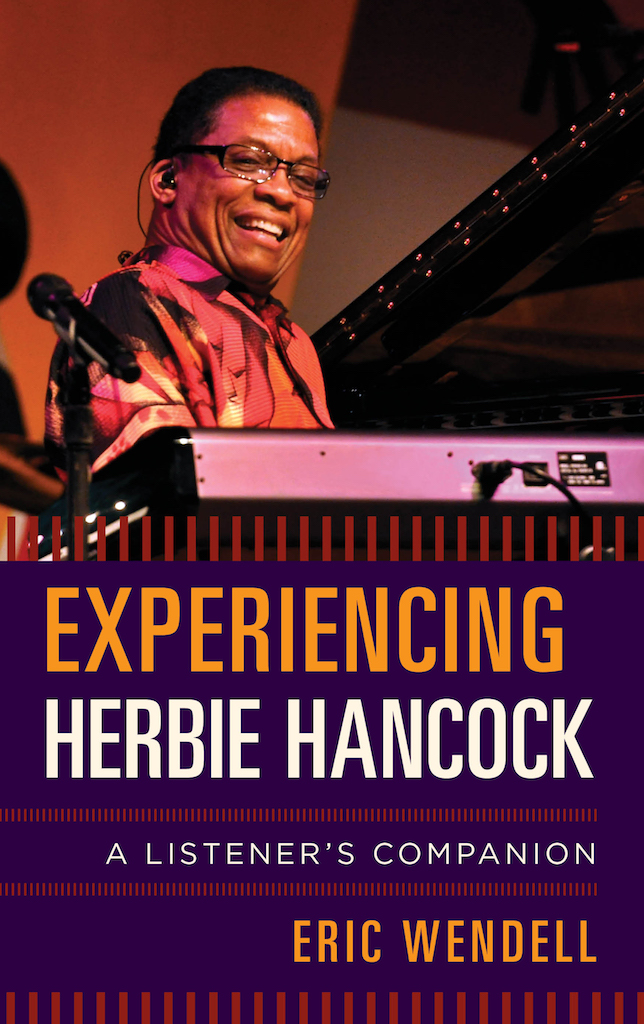The chronologically record-centred approach can distort the wider picture. Hancock’s career has been stylistically varied and Wendell tends to slip into a “he switches from abstraction to funky fusion, to multi-synthesised noise” syndrome when slogging through the review copies
Subtitled “A Listener’s Companion”, this book is part of a series that includes a spread of music from Beethoven to Ornette Coleman to Led Zeppelin and, judged by the treatment of Herbie Hancock, concentrates very heavily on recordings. Tracks are covered in some detail, with happenings thereon indicated by precise timing to ensure the listener is alert and waiting to check his/her reaction against that of Eric Wendell. “Hancock begins the solo cycle at 1:50 with beautifully dictated phrases……..” is a typical example.
After a summary of Hancock’s early career we arrive at his first recorded items, playing piano in the Donald Byrd-Pepper Adams quintet (having reviewed it, I’m surprised there is no mention of the At Jorgie’s album, which includes a few live versions of tunes recorded at the studio sessions). Apart from some by Miles Davis, the remaining albums mostly feature the pianist as leader, with Wendell guiding us through his development from post-bop to other things.
The chronologically record-centred approach can distort the wider picture. Hancock’s career has been stylistically varied and Wendell tends to slip into a “he switches from abstraction to funky fusion, to multi-synthesised noise” syndrome when slogging through the review copies. This gets confusing because, compared to Miles Davis, Hancock never leaves his past completely behind and in between dollops of electronic sounds we are suddenly back with piano trios and revivalist quintets.
It cannot be easy to traipse through albums in this way and evaluate each one so as to engross the reader. Wendell relies upon a kind of linguistic shorthand that may suit his circumstances but seems to have been largely unedited in the published version. A couple of words, “interstititial” and “nondiegetic”, had me fumbling for the dictionary and I still cannot relate them to music.
To sum up, definitely not a book to read in one sitting nor without at least a few of the albums to hand. As a kind of road test, I checked a couple of write-ups against the relevant recommended sounds. Both relate to Hancock’s electronic period – Hidden Shadows by the Mwandishi band and then Chameleon from the first big-selling Head Hunters album. Not sure the timing prods add to the listener’s understanding even with, as here, long tracks not dominated by solos. Credit to Wendell, though, for always identifying every one of the electronic marvels to hand.
Incidentally, Hancock’s success in this field may owe something to a background in engineering so that, as Wendell might put it, inventors of said marvels were keen to get him to sample them.
Experiencing Herbie Hancock, by Eric Wendell. Rowman & Littlefield, hb, 221pp. ISBN 9781442258372
















